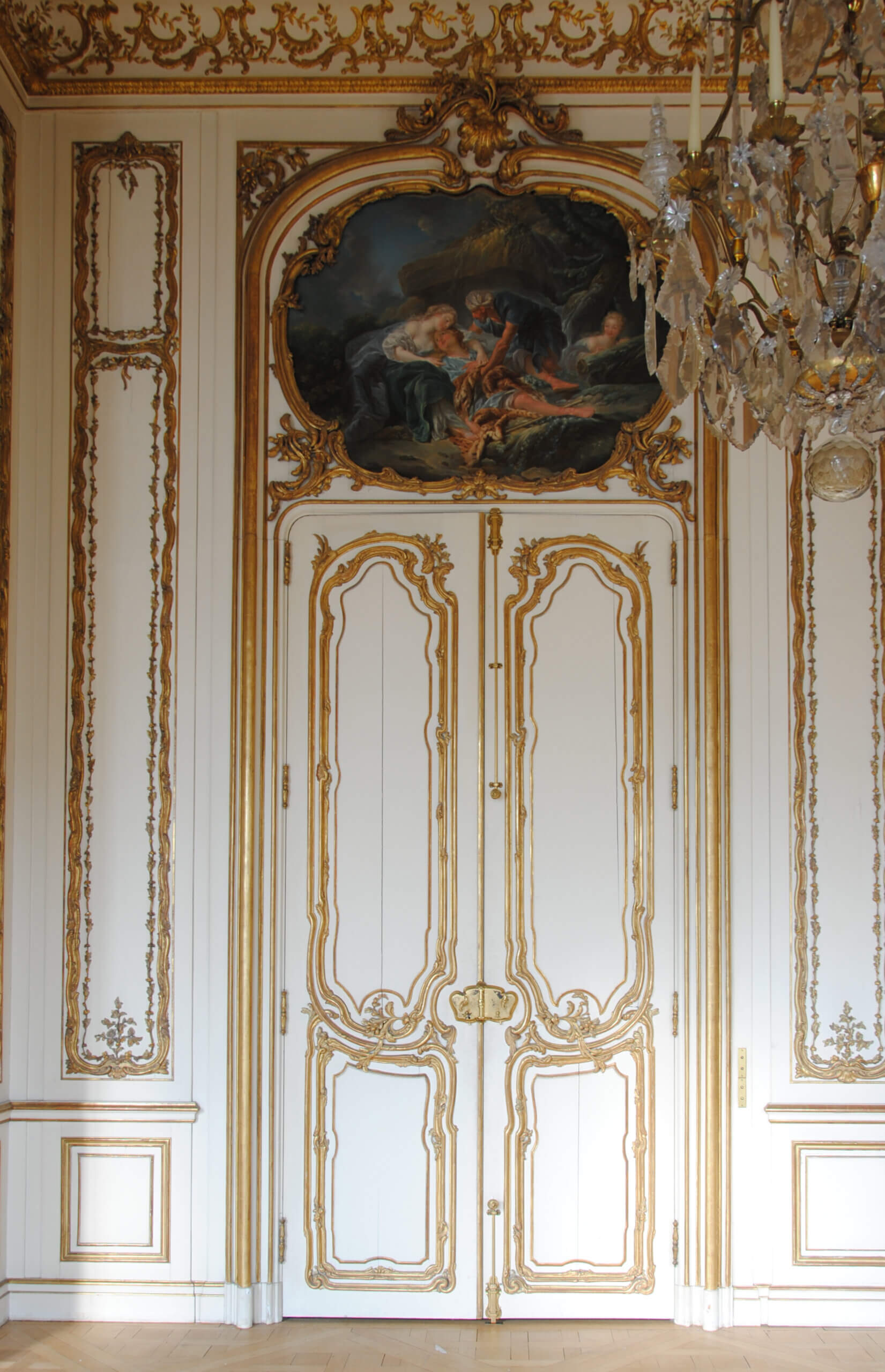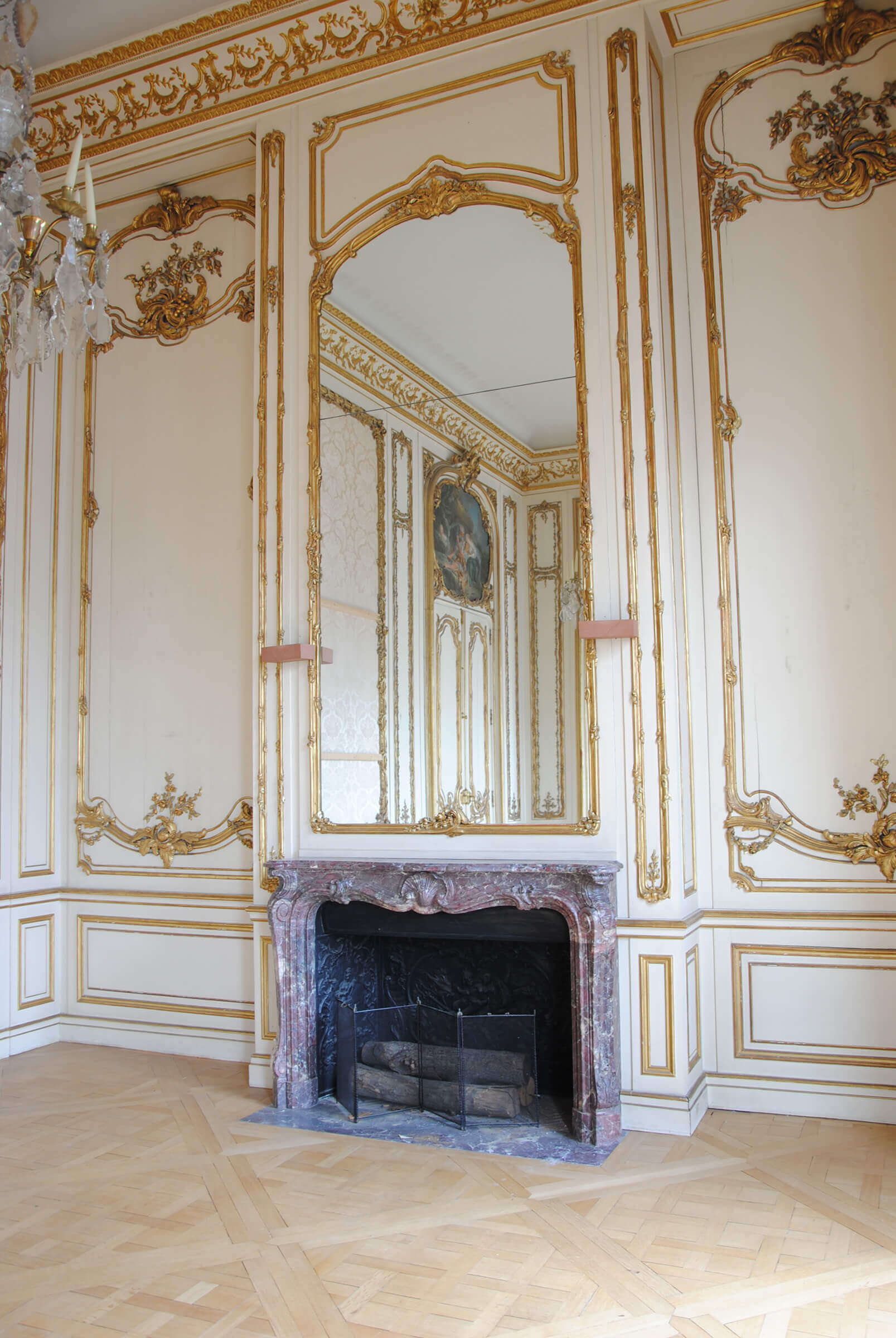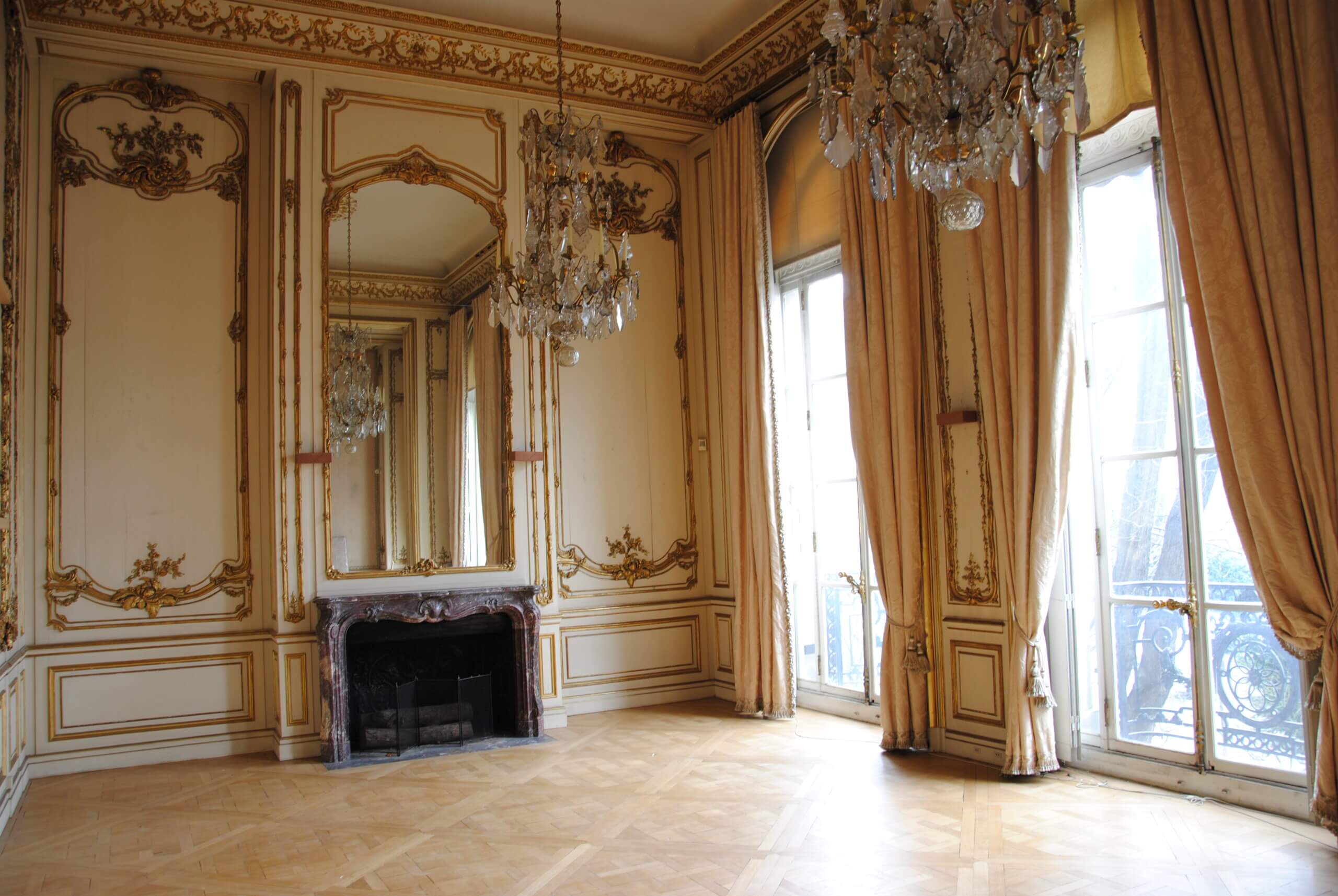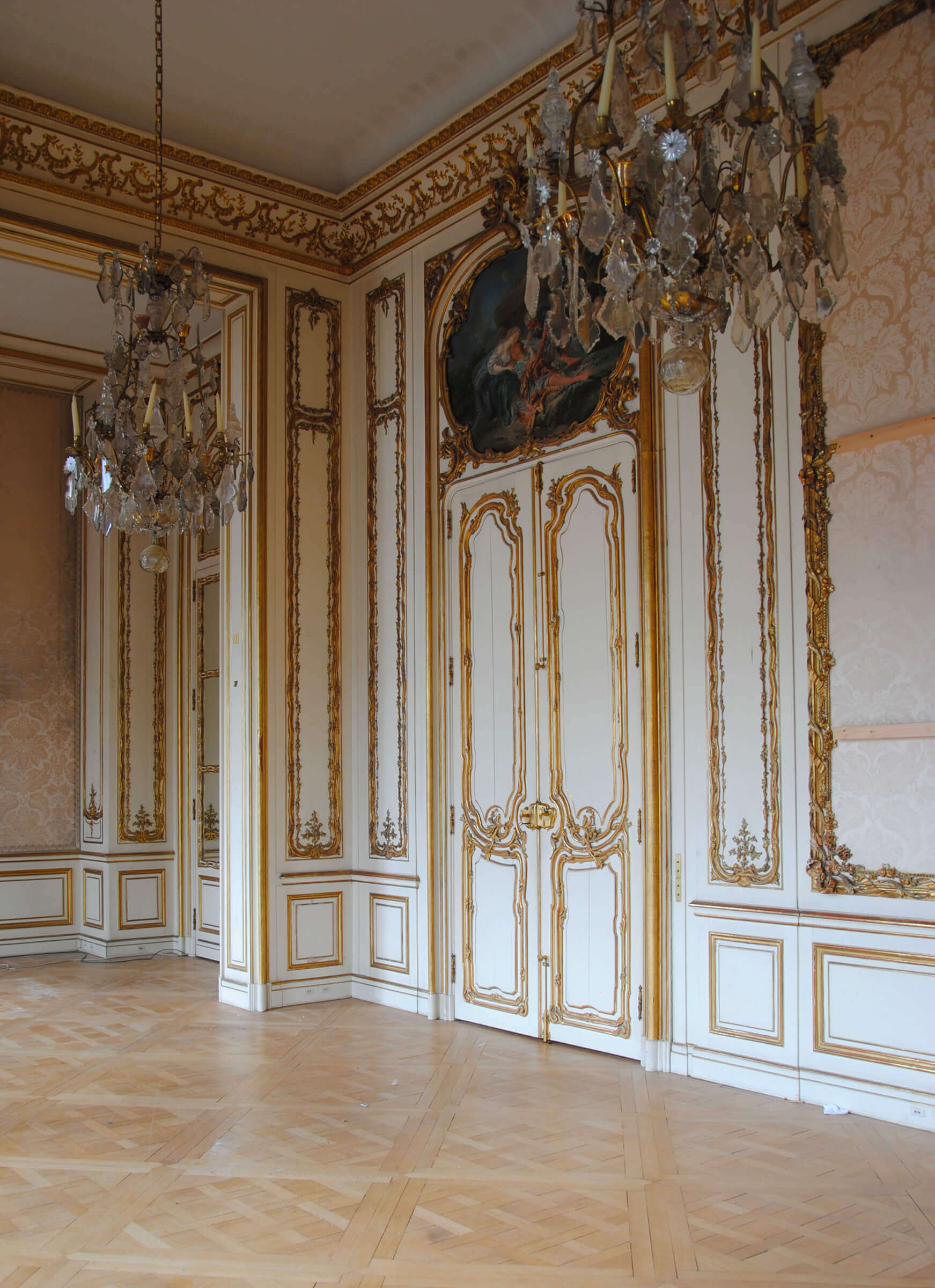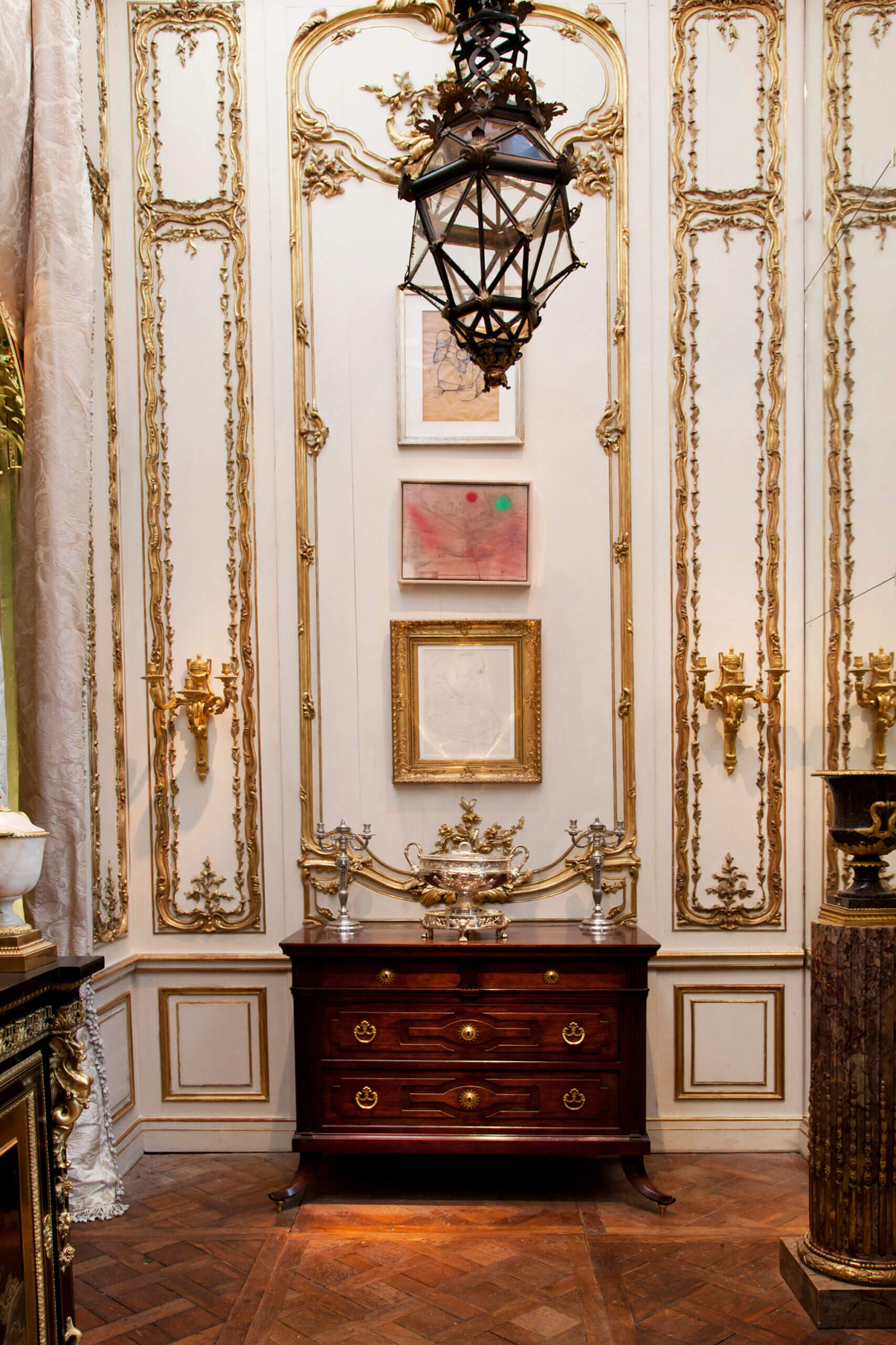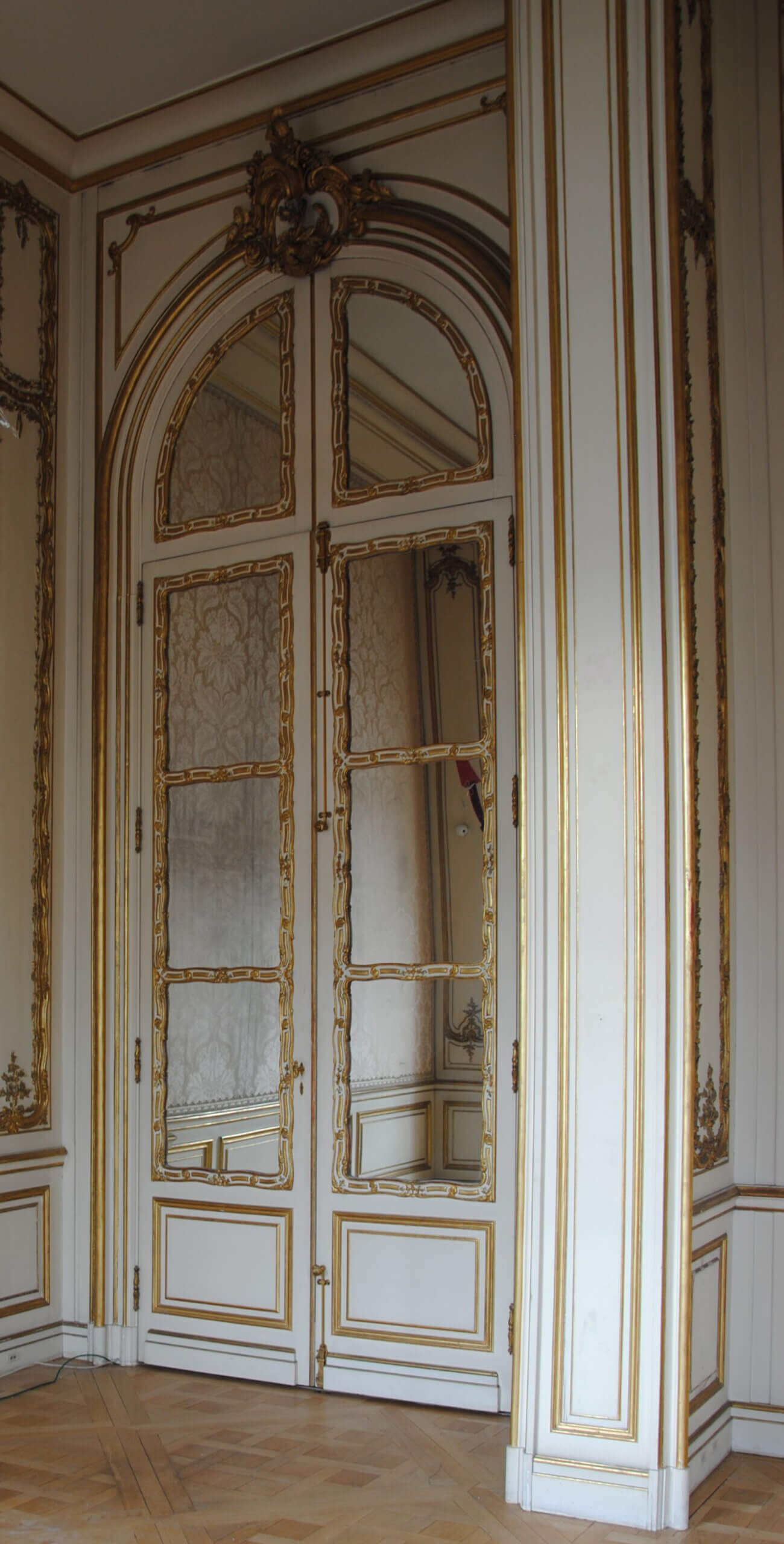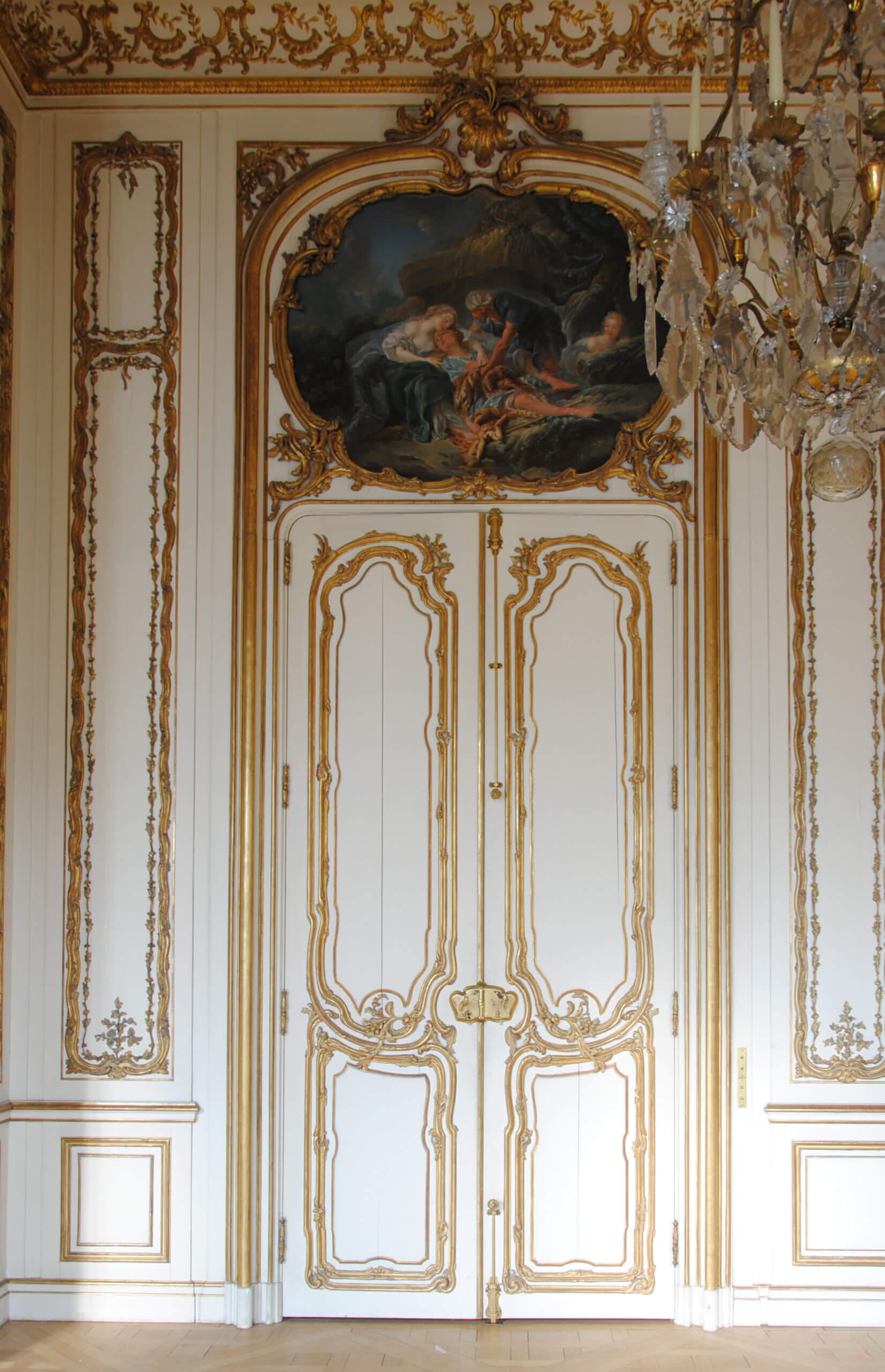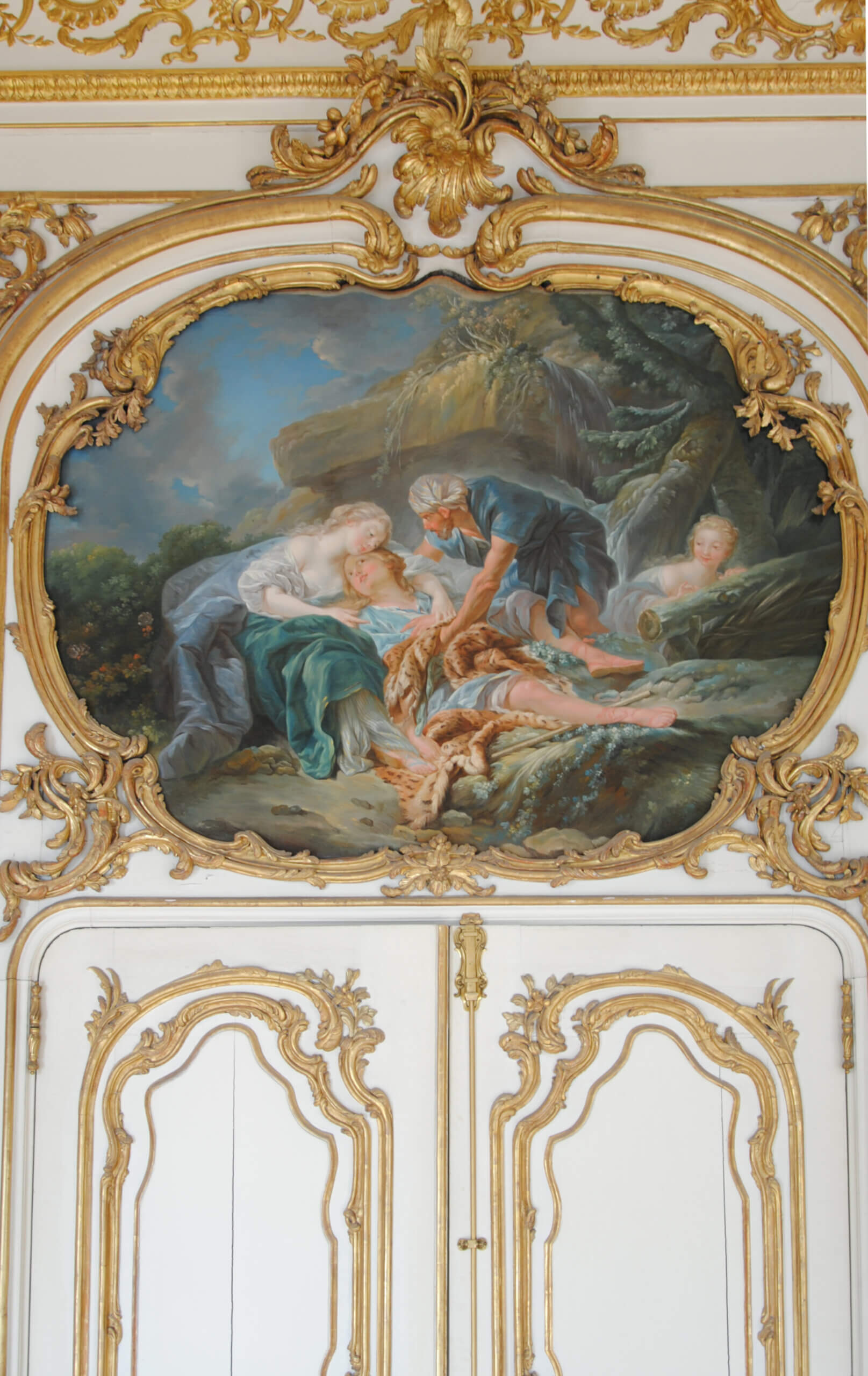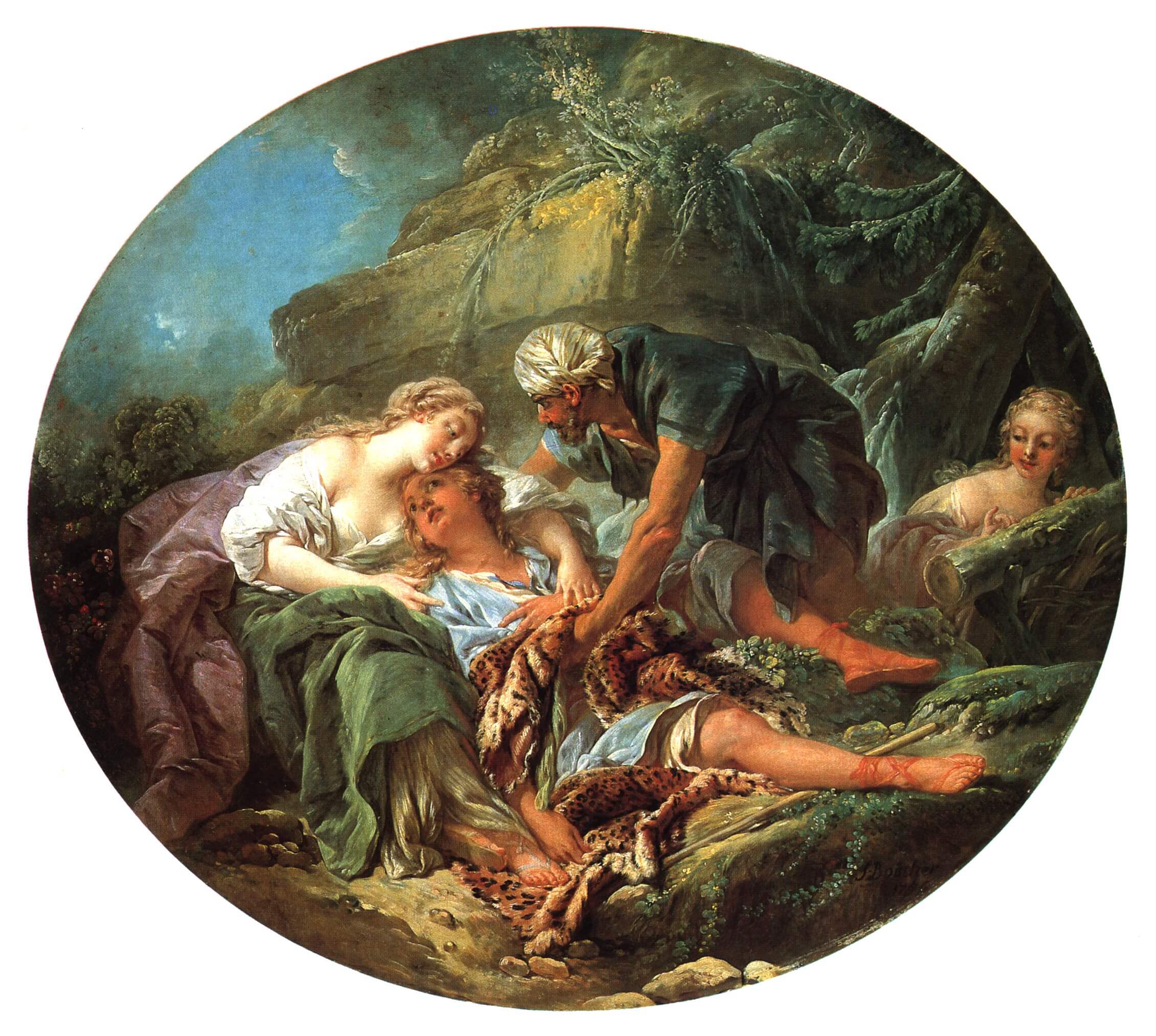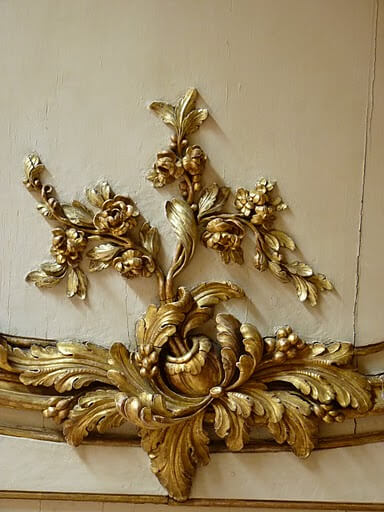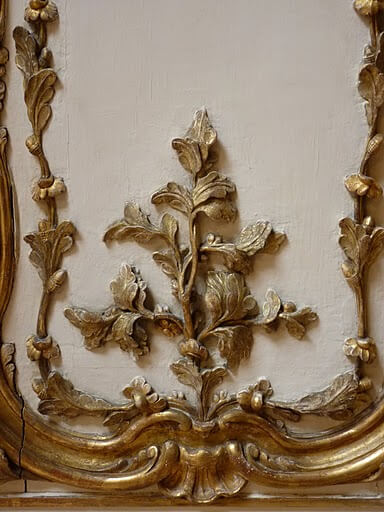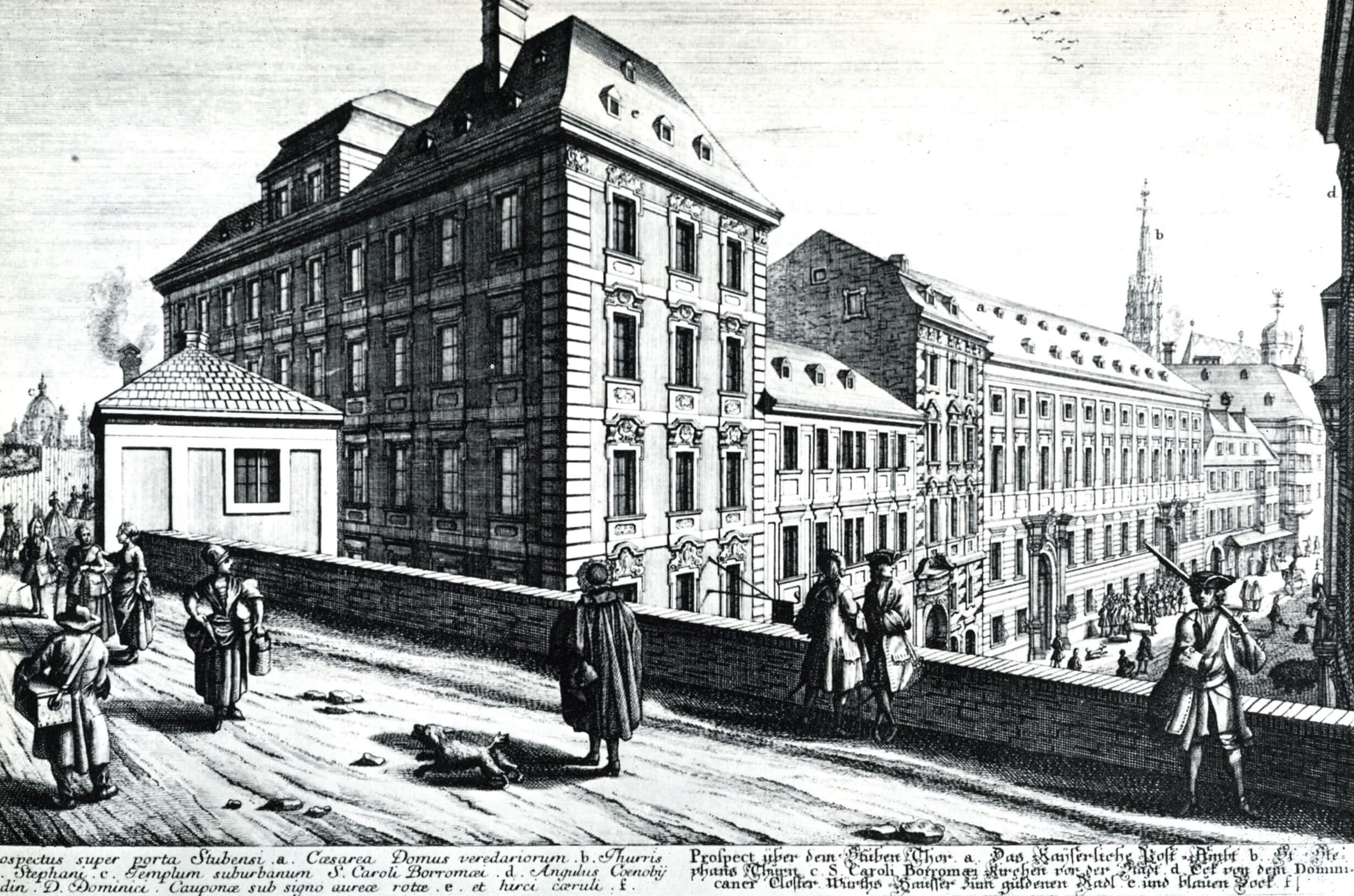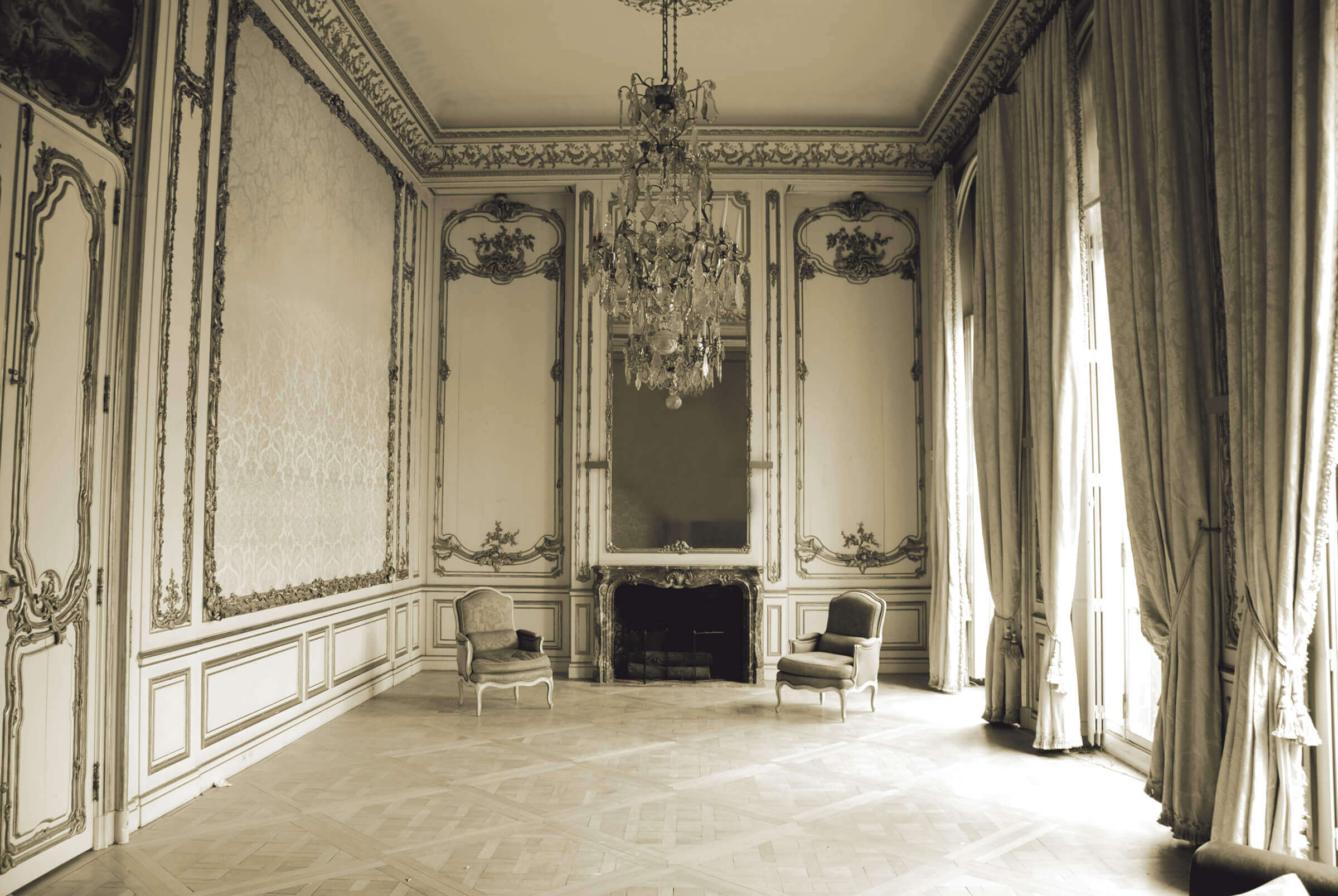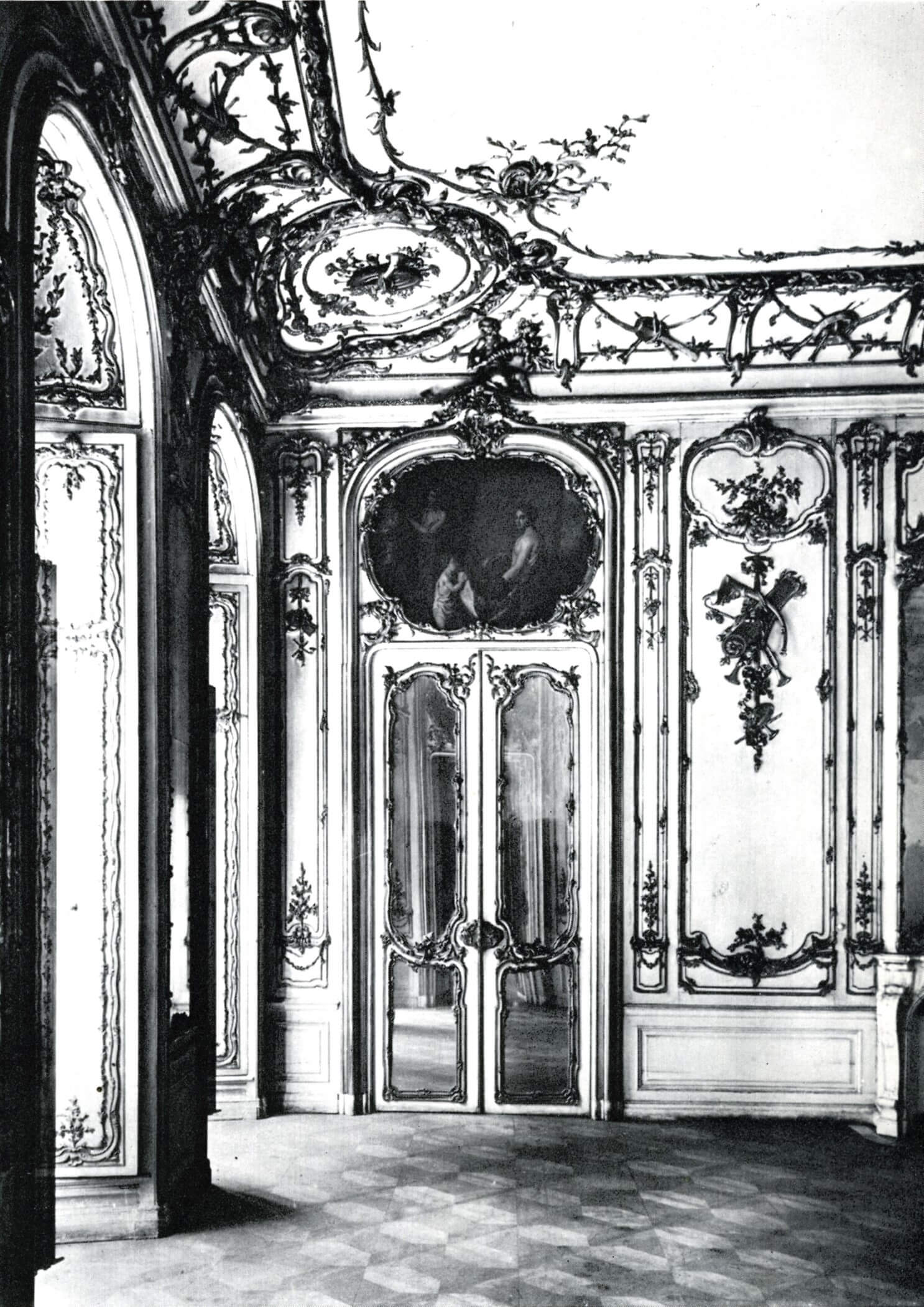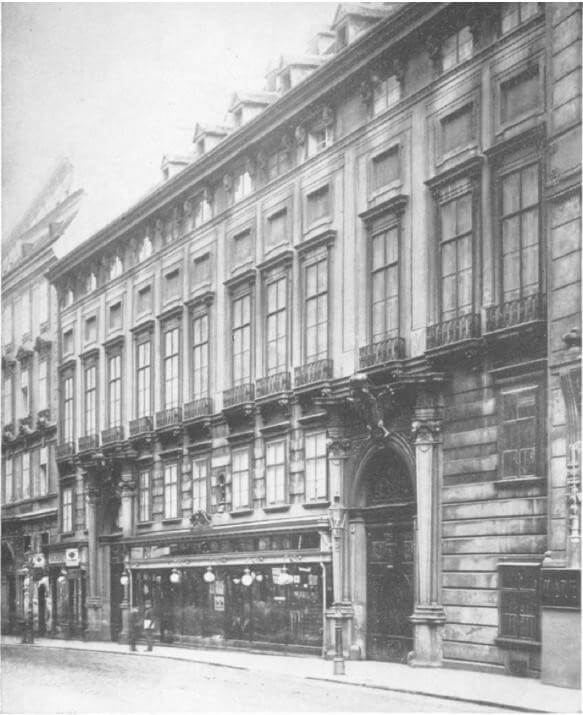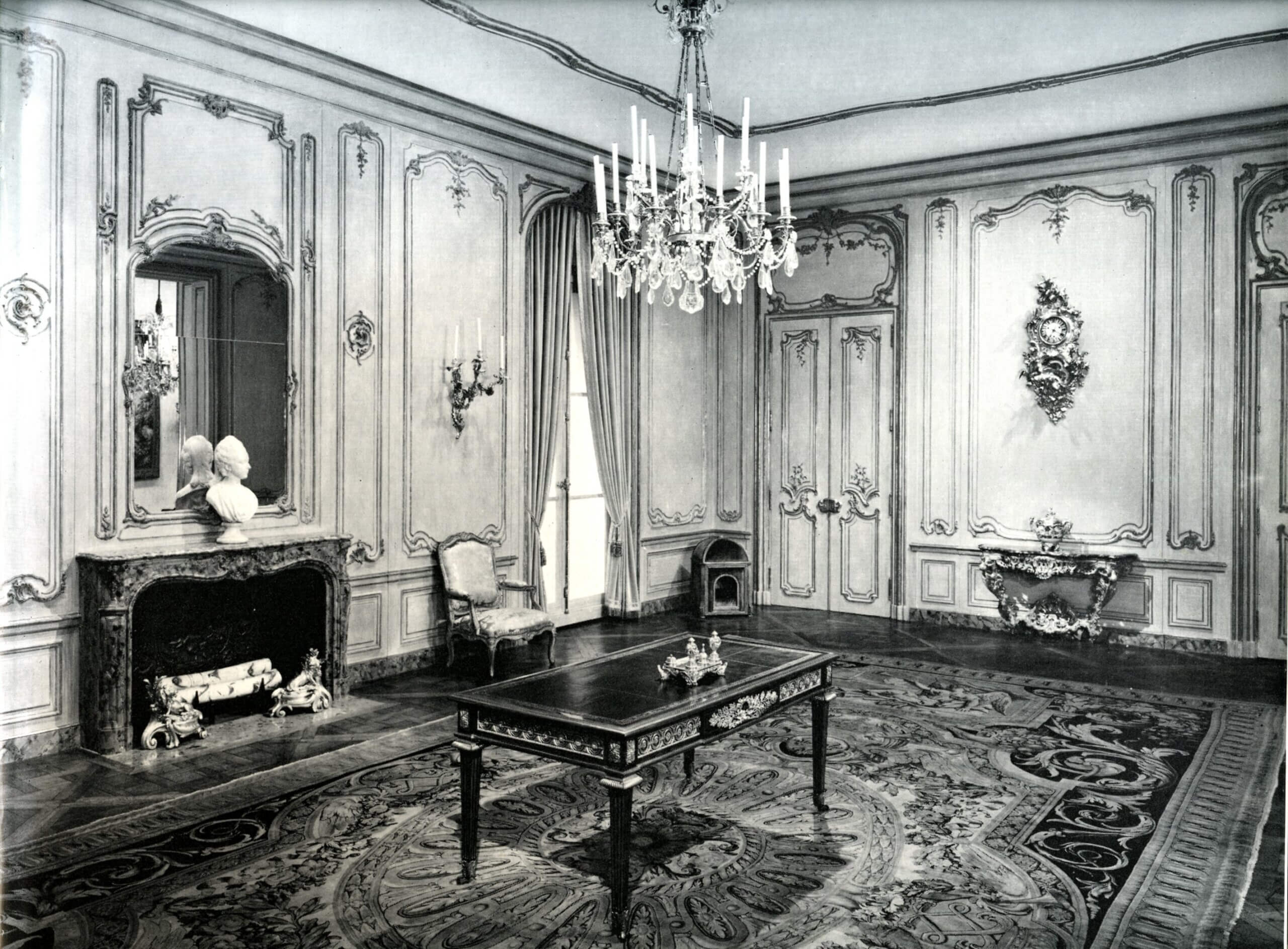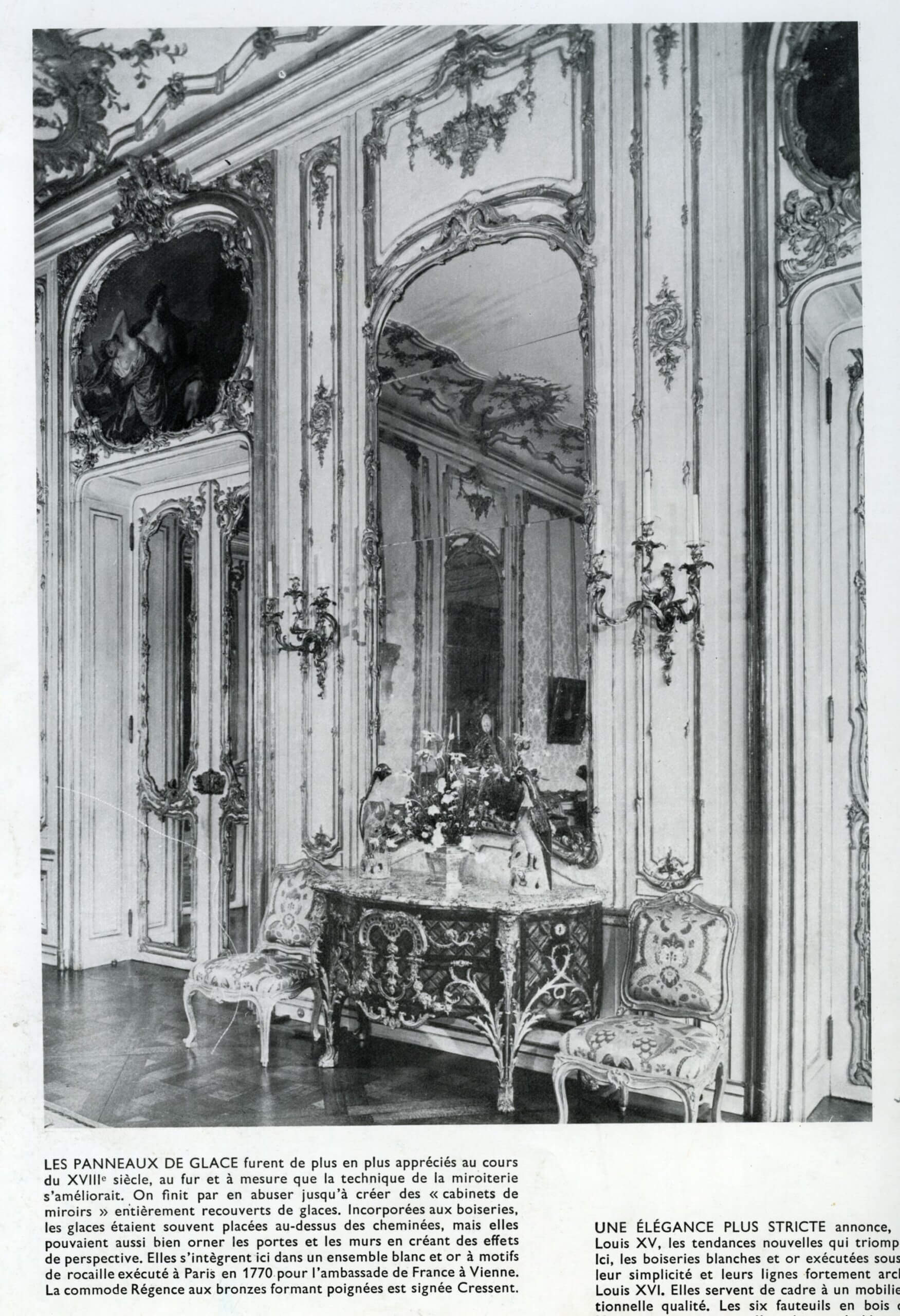

Sculpted, painted and gilded wood.
H. 5.50 m. (18 ft.).
HISTORY: executed between 1765 and 1771 for the Paar Palace in Vienna by the sculptor Johann Georg Leithner (1725-1785) under the supervision of the architect Isidor Canevale (1730-1786); sold when the Paar Palace was destroyed in 1938.
PROVENANCE: private collection.
BIBLIOGRAPHY: Collection entitled: Boiseries, superportes du palais Prince Paar Vienne [Vienna, before 1937].
This remarkable set of boiseries comes from the Paar Palace in Vienna, a lavish Baroque dwelling built in around 1630 for Baron Johann-Christoph Von Paar, appointed “Minister of the Post” of the Austrian Empire by Emperor Ferdinand II. Composed of gilt panelling with a white background, the decoration takes the form of a series of panels and adjoining panels displaying an astonishing quality of sculpture, mounted on cimas with a single compartment, and ornamented with double mouldings with jigsawed edges, punctuated with volutes overlapping with acanthus leaves and flowerets. The large panels stand out for the presence of a jigsawed cartouche in the upper part, flanked with a winding bouquet of acanthus leaves from which emerge leafy branches: a motif repeated on a smaller scale appears on the lower part.
The adjoining panels each have an astonishing “wave” border. An overdoor, also with jigsawed borders, illustrates a mythological scene representing Amyntas regaining consciousness in the arms of Sylvia, a subject taken from Tasso’s L’Aminte (1581), a canvas painted after the original by François Boucher (1703-1770), now in the Musée des Beaux-Arts in Tours. All the decoration exhibits a remarkable quality of execution, right through to the engraving of the keyholes and other metalwork with fluted toruses.
